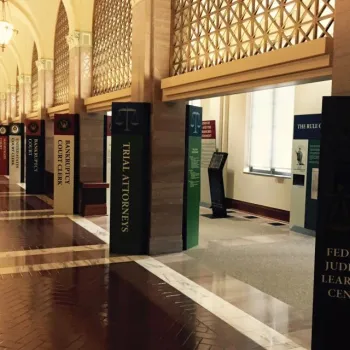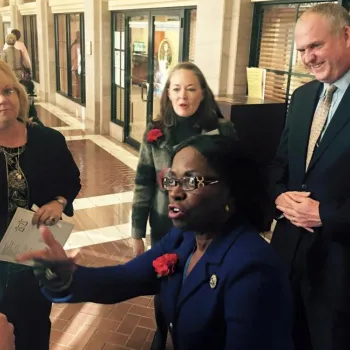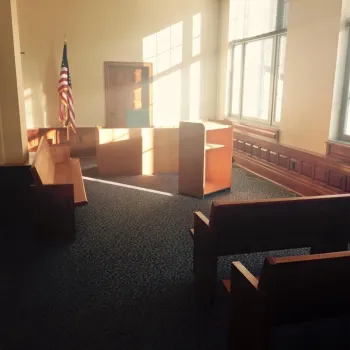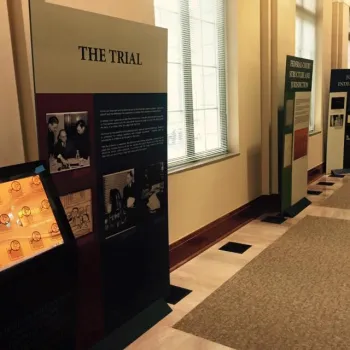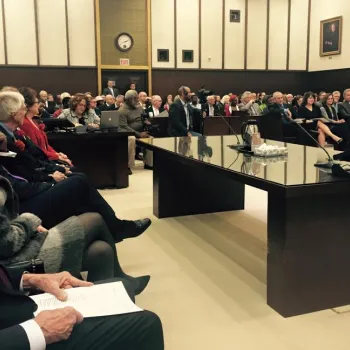The sound of young people’s laughter is rarely heard inside a courtroom, but that is rapidly changing in Oklahoma City, where a new judicial learning center and museum is teaching schoolchildren and the general public about federal courts and the rule of law.
Chief Judge Vicki Miles-LaGrange said the center, located in a historic building that for decades housed a U.S. District Court, provides learning opportunities for drop-in visitors, students, and guided tours. In a realistic moot courtroom, mock trials enable visitors to play the roles of judge, jury and attorney.
Over time, Miles-LaGrange said, “There will be interactive learning displays, including kiosks and laptops with oral histories of judges and all court unit executives, classes on how the federal court functions, as well as tours of the courthouse.”
Volunteer docents are conducting tours, and a part-time coordinator is managing the volunteers and soliciting visitors and program participants. Displays and programming support the center’s theme, “The Rule of Law Keeps Us Free.”
“Civics education and court education are important functions of the federal courts,” Miles-LaGrange said, “because they promote an understanding of the role of federal courts, and advances the importance of the rule of law in American society.”
Miles-LaGrange said she was asked by the district’s previous chief judge, Robin Cauthron, to better document the court’s history. In turn, members of the local bar established the Historical Society for the United States District for the Western District of Oklahoma.
She credits J. Edward Barth, president of the center’s board of directors and a longtime pillar of the legal community, with galvanizing public understanding of what an asset the judicial learning center and museum would be for Oklahoma City and the state.
“I am very concerned about the state of civics education in the country," said Barth. "I believe the legal community can help raise the level of knowledge, understanding, and appreciation for the courts. Judicial Learning Centers are an excellent way to bring communities into courthouses for a memorable learning experience and interaction with judges. Our democracy depends on a citizenry that values and feels an attachment to the judicial system."
Robert Blackburn, executive director of the Oklahoma Historical Society, helped develop an oral history project to interview judges and court personnel. Miles-LaGrange also praised the court’s chief deputy clerk, Rhonda Reynolds, for suggesting the Old Post Office and Courthouse building as the best museum site.
The historic building, which continues to house the federal bankruptcy court, the federal public defender and the probation and pretrial services office, was the site of several famous Western District of Oklahoma cases, including the 1933 prosecution of mobster “Machine Gun” Kelly.
That case and others are recalled in museum displays, which also explain how civil and criminal cases move through the federal courts; the differences between state, tribal and federal courts; and the relationship of the judicial branch with the other branches of government.
The Learning Center is one of a small but growing number of federal courts that provide interactive education for the public. Federal courthouses in St. Louis and Sacramento also house learning centers and many courts house educational displays in public areas.
Miles-LaGrange said she is eager to educate all visitors, but she especially looks forward to seeing one age group walking the old courthouse hallway. “It is what the children are going to learn when they start to visit and participate,” Miles-LaGrange said. “That both pleases me and excites me.”
Subscribe to News Updates
Subscribe to be notified when the news section is updated.

